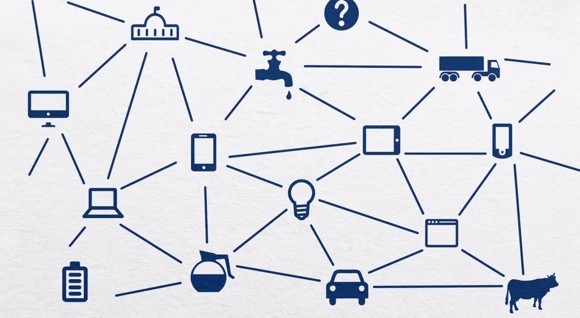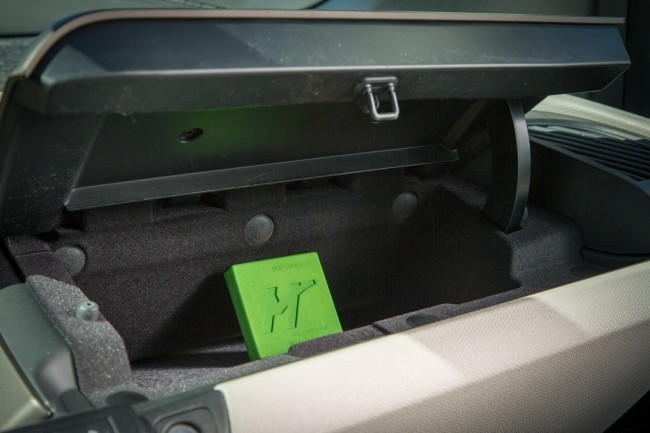Tips for 3D Printing the Internet of Things
Posted By Jess Hedstrom on Aug 21, 2015 | 0 comments
What’s happening on the front lines of 3D printing for the internet of things?
This is a very important question because we are all witnessing an overlap of ‘3DP for IoT’, and today we are going to show you why this is becoming the next “it” sector and how YOU can get involved.
You’ve probably already seen commercials that talk about the “Internet of Things” like the CISCO commercial below, “but what does this mean for 3D printing” you’re probably wondering? Today we are going to unpack IoT to explore what it means for you in the 3D printing ecosystem. While attending the Intel Developers Forum 2015 (IDF15) in downtown San Francisco I sat in on a session entitled “Designing for the Internet of Things: The Technology Behind the Hype” and what I learned in that session in particular is worth sharing with you today.
The speaker was Jeff Fortin Director and Product Manager for Wind River. He is the IoT platforms product manager responsible for the IoT gateway stack that is used on the Intel IoT Gateway. Fortin began by stating that “The internet of things bridges the gap between Information Technology (IT) and Operational Technology (OT)”.
How do we blend 3D Printing with the Internet of Things?
When you begin 3D modeling/3D printing for the Internet of Things keep in mind that you will need to house circuitry and boards in the model without it affecting the capability of the model’s articulation. If you have never created a fully articulated 3D model before check out this brief recommendation in Sculpteo’s FAQs under articulation.
Wondering why articulation is so important? When Fortin stated that “the internet of things bridges the gap between IT and OT”, what he means is that hardware and software will work together to recognize the conditions around it via cameras or sensors, if the conditions are not optimal then the hardware and software will work together to manipulate the conditions of the environment until they are. Confused? Let’s take a look at an example from the IDF15 conference.
At the Intel Developers Forum 2015 (IDF15) which I recently attended in downtown San Fran, I saw how the internet of things is currently being used; our example the mini greenhouse shown below. The greenhouse below has sensors that collect data regarding the humidity, the temperature, pH balance, and the luminosity of the environment. All of that data is stored in the cloud and when the conditions slip out of the optimal range it can intelligently turn on fans, turn off lights, control the sprinklers and even open windows.
In this example you can see that automation, and robotics are extremely important for the greenhouse to function, and the same is true for any design that plans to bridge the gap between IT and OT. When creating 3D models and 3D prints for IoT remember that the hardware itself should add to the function of the software. Luckily for you 3D printing for automation is increasing here at Sculpteo; if you haven’t had a chance to become familiar with the Sculpteo Robotics Page I would recommend you do so, we also host Meetups regarding robotics; if need be you can pose questions and receive answers from our talented and amazing Sculpteo community!
In the IDF15 session that I attended entitled “Desiging for the Internet of Things: The Technology Behind the Hype” Jeff Fortin (mentioned above) also states that a great use for Iot is that “if something needs to be updated, turned off, or fixed you can do it from a remote location rather than having to go over and do it by hand”, he then explained to the audience how wind turbines are updated, long story short it involves a brave repair man and a USB stick. There are many areas of opportunity for IoT and 3D printing, including: energy, drones, robotics, medical and many other industries.
Advise for 3D printing enclosures for your IoT projects!
Are you thinking “But Jess my software is going to do all the heavy lifting; my hardware doesn’t need to be articulated”. No worries, many projects that fall under the category of IoT don’t actually need to be articulated because the hardware is just an enclosure for the software (and usually a display screen). If you’re only looking for an enclosure for your software and perhaps display screen, let’s take a look at one of our Sculpteo clients that use our services for final manufacturing: MyDrivingPal. This company provides a smart tracker which sends data back to the owner via a mobile app. Many people put them on their bikes, in their cars and even clip them to drones, children and the elderly to provide peace of mind. As you can see below the hardware doesn’t need to do anything except hold the electronics housed within.
BUT there are still important considerations, mainly regarding materials. If you’d like to provide you customers with their option of color, Plastics will be a great option, if the enclosure needs to be extremely durable another option for your enclosure could be Alumide, or perhaps if there’s a lot of design detail on your enclosure such as a logo or aesthetic design, or if you’d like your enclosure to be transparent high detail resin is a great option for you.
We hope that you’ve found this article helpful as you 3D print in the IoT sector and if you’re looking for more information regarding the internet of things and 3D printing comment below or send questions or comments to [email protected].


 Connect with Google
Connect with Google Connect with Facebook
Connect with Facebook


